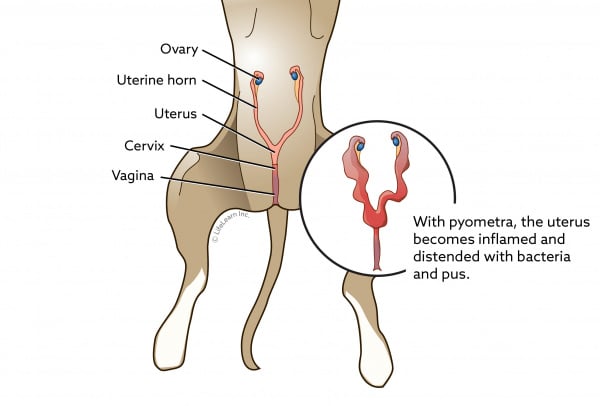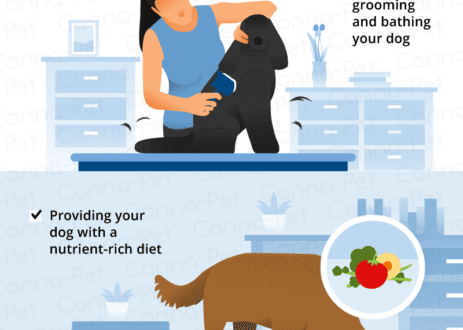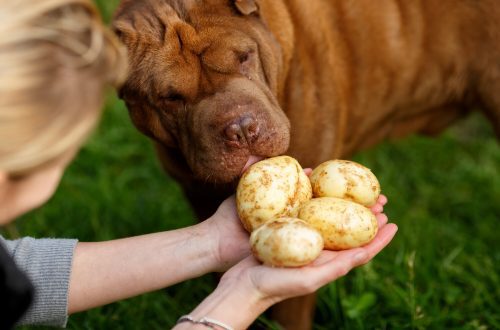
Pyometra i madraí: comharthaí agus cóireáil
Pyometra is an acute infectious disease in which purulent discharge accumulates in the dog’s uterus. How to recognize the development of the disease in time and protect your pet from serious consequences?
Pyometra in dogs most often develops during diestrus, a few months after estrus, while the amount of the hormone progesterone in the body of the animal is increased. Doctors distinguish two types of uterine inflammation in dogs: open and closed. As a rule, open-type pyometra, when the cervix is open, flows more easily and is easier to treat. Without medical intervention, the disease can go into an acute phase. This threatens with the development of peritonitis, septic processes, cardiac arrhythmia, fadhbanna le urination and other complications.
Clár ábhair
Reasons for the development of pyometra
Pyometra usually develops in animals older than 5 years, but dogs of any age are at risk. The main reason for the development of the disease is a change in the hormonal background of the animal, associated with an increase in the level of progesterone, which stimulates the production of mucus in the uterus. Because of this, an immune failure occurs in the body and an inflammatory process begins. Later, pus accumulates in the uterine cavity, and toxins are absorbed into the blood, which leads to severe intoxication of the body.
Comharthaí an ghalair
The development of pyometra of the closed type usually begins more acutely than with the open variety. However, in both cases, symptoms appear that indicate inflammatory processes in the dog’s body:
- laghdú ar bhia
- fiabhras,
- lethargy, drowsiness,
- unusually frequent urination
- tart méadaithe,
- díhiodráitiú,
- urlacan.
A little later, symptoms of pyometra appear:
- faoi bhláth,
- muscle wall tension
- pain when touching the abdomen in the uterus.
With an open form of pyometra, the main symptoms are:
- inflamed loop in a dog,
- discharge of pus from the loop, usually with an unpleasant odor,
- ardú beag ar theocht
- rapid fatigue of the animal,
- iompar gan staonadh.
Diagnosis and treatment of pyometra
At the initial stage of the disease, it is difficult to understand what exactly is happening to the animal, so it is important to immediately consult a doctor and start treatment in a timely manner. The veterinarian will prescribe an ultrasound of the dog’s abdominal cavity and determine the form of the disease.
If an animal is diagnosed with closed-type pyometra, surgery is usually performed to remove the uterus and ovaries. The open form usually does not require surgery, and treatment may be limited to medical therapy.
Bearta coisctheacha
Tráthúil coilleadh – this is the main and main measure for the prevention of pyometra in bitches. This is the only way to reduce the risk of pyometra to a minimum. In other cases, it is necessary to abandon hormonal preparations with estrogen to suppress sexual desire and consult a veterinarian at the first sign of the disease.
Féach freisin:
- Mycoplasma in dogs: treatment and prognosis
- Na galair madra is coitianta: comharthaí agus cóireáil
- Osteoarthritis i Madraí: Comharthaí agus Cóireáil





